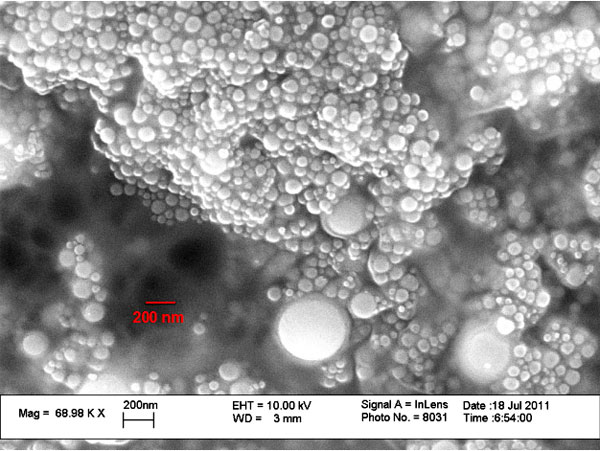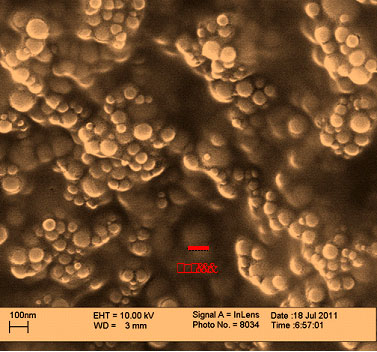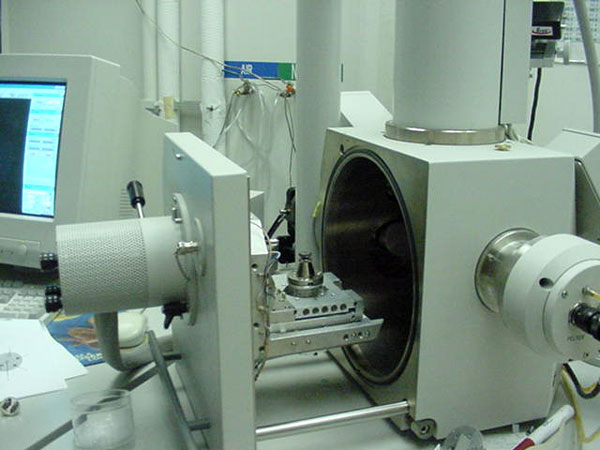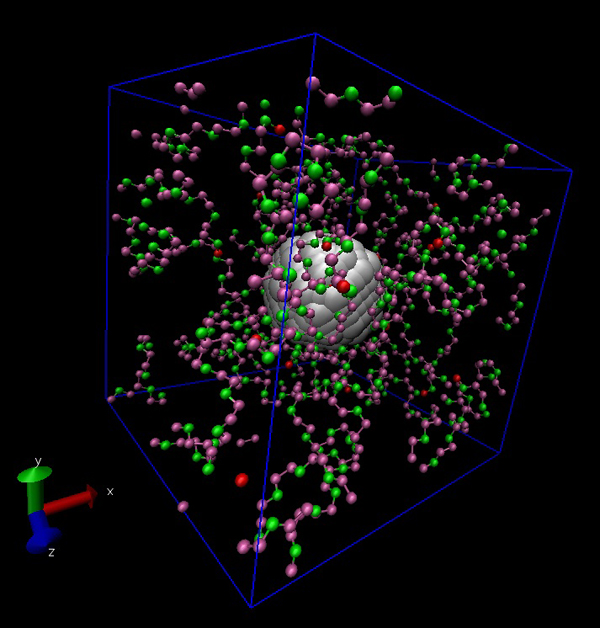The Mysterious Small
Today, we explore Small. The University of Houston's College of Engineering presents this series about the machines that make our civilization run, and the people whose ingenuity created them.
We've heard this phrase before: "Space, the final frontier." But another exciting frontier has emerged. It's on the opposite side of the scale — the world of small dimensions. As we step into this elusive and mysterious world, the questions remain: how far can we go and what lies at the far end of this world?
The other day, my students and I were discussing an image of nanoparticles — ones close to billionth of a meter in size. These were ceramic particles embedded in solid polymer electrolyte for potential use in lithium ion batteries. The image was taken using scanning electron microscopy. This image would have been impossible in early 1900s when only optical microscopy was available.

Scanning Electron Microscopy (SEM) image of Hydroxy Apatite nanoparticles (Eric Wood and Haleh Ardebili, University of Houston)
In those days, imaging was limited to millionth of a meter. Nothing smaller could be viewed. We've now dramatically advanced. We can even take images of tenth of nanometer — the size of atoms. Yes, we can finally see a single atom. This can be done with high-resolution transmission electron microscopy.

SEM of HA nanoparticles
(Eric Wood and Haleh Ardebili, University of Houston)
My student and I also analyzed a molecular dynamic simulation of polymer chains wrapped around a nanoparticle. The computer simulation snapshot represented pico-second of molecular interactions. That's a nano-second divided by a thousand or 10 to the power of -12. Very small time for us, but large enough time for the polymer chain to undergo thermally driven segmental motion.
Nano, pico, small dimensions, small times: Small has been a common research theme for the past several decades.
In December of 1959, the physicist Richard Feynman gave a lecture at the American Physical Society at Caltech. He talked about the manipulation of materials at small scales. The title of his famous talk was "There's Plenty of Room at the Bottom."
Since then, we've made significant advances in the world of small' We can build nano-motors and nano-robots. We can fabricate nano-circuits and nanoparticles. We can even image at atomic scale.

A scanning electron microscopy chamber. Wikipedia image.
What is on the horizon for us? Our theories guide us toward target discoveries but we need highly sophisticated machines and instruments to actually get us there. As we approach smaller and smaller dimensions, it becomes increasingly evident that, given our current technologies, our targets may be disappearing out of our reach. So, we continue to seek new technologies and novel approaches to explore this mysterious world of small.

Molecular Dynamics (MD) simulation snapshot of polymer chains wrapped around a nanoparticle; the size of the simulation box is 3.5 nm; the spherical nanoparticle is about 1 nm (Qin Li and Haleh Ardebili, University of Houston).
I'm Haleh Ardebili at the University of Houston, where we're interested in the way inventive minds work.
Reference:
Richard Feynman: "There's Plenty of Room at the Bottom" http://calteches.library.caltech.edu/47/2/1960Bottom.pdf.
This episode was first aired on October 12, 2012